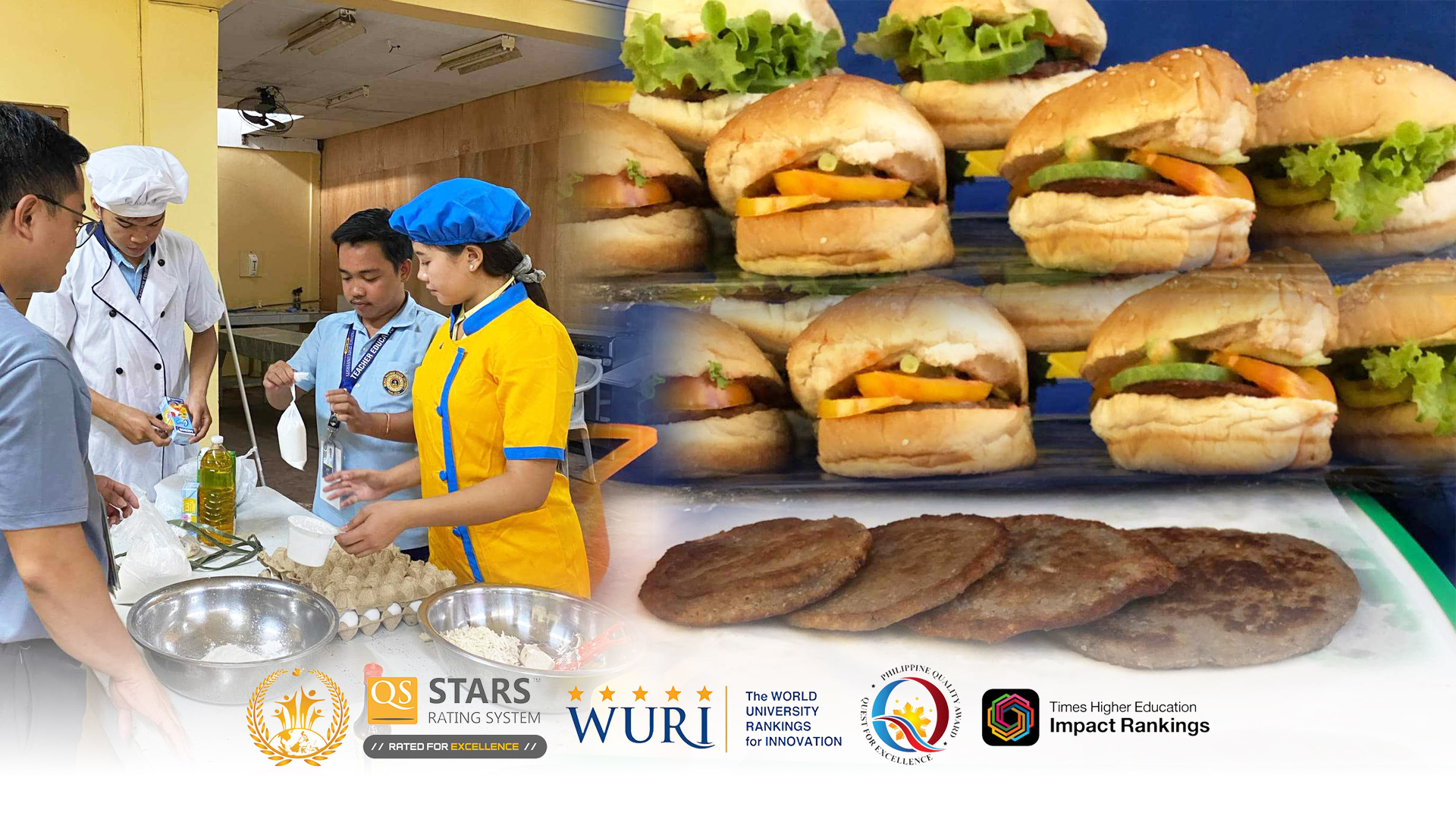Embracing its core values of innovation, Biliran Province State University, through the School of Teacher Education (STEd), has introduced a groundbreaking burger patty development, showcasing a skill beyond instruction and a mind that thinks out-of-the-box.
In the landscape that we found ourselves in today, burgers, those tempting delights perfect for a quick lunch or a laid-back dinner, seem to be available on every street corner. However, despite their mouth-watering appeal, they come with a hidden cost to our health. Laden with dietary cholesterol and saturated fat, these juicy patties are made from meat that is notoriously high in both. This combination is linked to an increased risk of cardiovascular diseases, such as heart attacks and atherosclerosis.
According to the World Health Organization (WHO), global mean intake of adults is 4310 mg/day sodium. This is more than double the WHO recommendation for adults of less than 2000 mg/day sodium.
Consider this: an average processed meat patty contains around 310 milligrams of sodium. A single-patty burger, even without mayonnaise, can pack in 3.5 grams of saturated fat and 26 milligrams of cholesterol. A small, one-patty burger without mayo still contains 258 milligrams of sodium. Consuming a high-sodium diet can lead to elevated blood pressure and heighten the risk of heart disease, stroke, and kidney disease.
Acknowledging such adverse effects, the faculty members of STEd-Main Campus namely, Dr. Joan Sinagpulo, Ms. Merlyna Sacare, Ms. Miramar Serrion, Ms. Maria Carmela Sabong, Ms. Melanie Masalihit and Mr. Reymark Pabilando, launched an alternative for burger meat patty in order to lessen the consumption of meat and to make an inexpensive burger patty for commercialization — the taro burger patty.
Taro, with the scientific name of Colocasia esculenta, is a robust perennial plant which flourishes in tropical and subtropical regions. Packed with ascorbic acid, dietary fiber, and essential minerals like thiamine, riboflavin, iron, phosphorus, zinc, niacin, potassium, copper, and manganese, it also boasts analgesic and anti-inflammatory properties.
In Filipino cuisine, taro is a key ingredient in a variety of exotic dishes. When combined with banana, sweet potato, cassava, sago, and coconut milk, it creates the beloved dishes known as Landang or Binignit. Additionally, taro is often used in sinigang, a savory soup featuring fish or pork, kangkong leaves, and chili, among others.
Therefore, it cannot be denied where there is a group of people sitting around, having fun, one of them went speaking, "You know what would be great? We should try the rising taro for this burger." And from that moment onward, the said faculty had put their brilliant ideas into operation, which could turn into a great surprise.
Using 77.46 % taro, 9.92 % all-purpose flour, 11.62 % egg, 0.46 % salt, 0.46 % grounded black pepper, 0.04 % chili powder, and 0.04 % sugar, the taro burger patty was successfully composed. With gentle and passionate hands, it came to fruition through the process shared below.
Learn the making of taro burger patty:
- Begin by carefully peeling the skin off the taro using a peeler. Rinse the peeled taro under tap water, then drain to remove any excess moisture. Grate the taro finely and set it aside.
- Next, sift the all-purpose flour to ensure it’s light and free of lumps. In a mixing bowl, combine the sifted flour with the grated taro. To this mixture, add the eggs, salt, ground black pepper, chili powder, and sugar. Mix everything thoroughly until you have a well-blended taro patty mixture.
- Shape the mixture into flat, circular patties. Heat a pan with oil and fry the patties until they turn a delicious golden brown. Allow them to cool slightly, and there you have it—a perfectly crafted taro burger patty.
Now, surely while reading, a skeptical frown creased your forehead, or your lips curled into a slight grimace on how this innovation tastes like. How about knowing first-hand reviews?
Among the lucky students who have met the first-ever display of Taro burger patty at the University Student Center last August 29 during the Research, Innovation and Extension Services (RIES) Expo are Daniela Mancing and Kurt Christian Atoc, both majoring Technology and Livelihood Education (TLED), whom have tasted such food innovation.
"As you bite into the patty, you’ll notice a pleasant, earthy aroma from the taro, complemented by the savory notes of the spices," Mancing recounted.
Meanwhile, Atoc expressed that "the natural sweetness of taro is subtly enhanced by the addition of a touch of sugar. The spices, including ground black pepper and chili powder, add a gentle kick, balancing the sweetness with a hint of heat."
This only shows, BiPSU is standing with the I of its core values—Innovation, committed to advancing a culture of creativity and forward-thinking solutions. Strutting such #WoWBiPSUnista innovation, excellence has once again woven not only into the fabric of the university but also into the efforts to enhance the quality of life within the community.
The technology for the Taro (Colocasia esculenta) burger patty is protected under a registered utility model with the Intellectual Property of the Philippines (IPOPHIL), with registration granted on March 31, 2023.
#WoWBiPSU
[The article aligns with Sustainable Development Goal (SDG) 2: Zero Hunger and SDG 3: Good Health and Well-being.]
-
 0
0
-
 7
7
-
 0
0
-
 0
0
-
 0
0
-
 0
0

